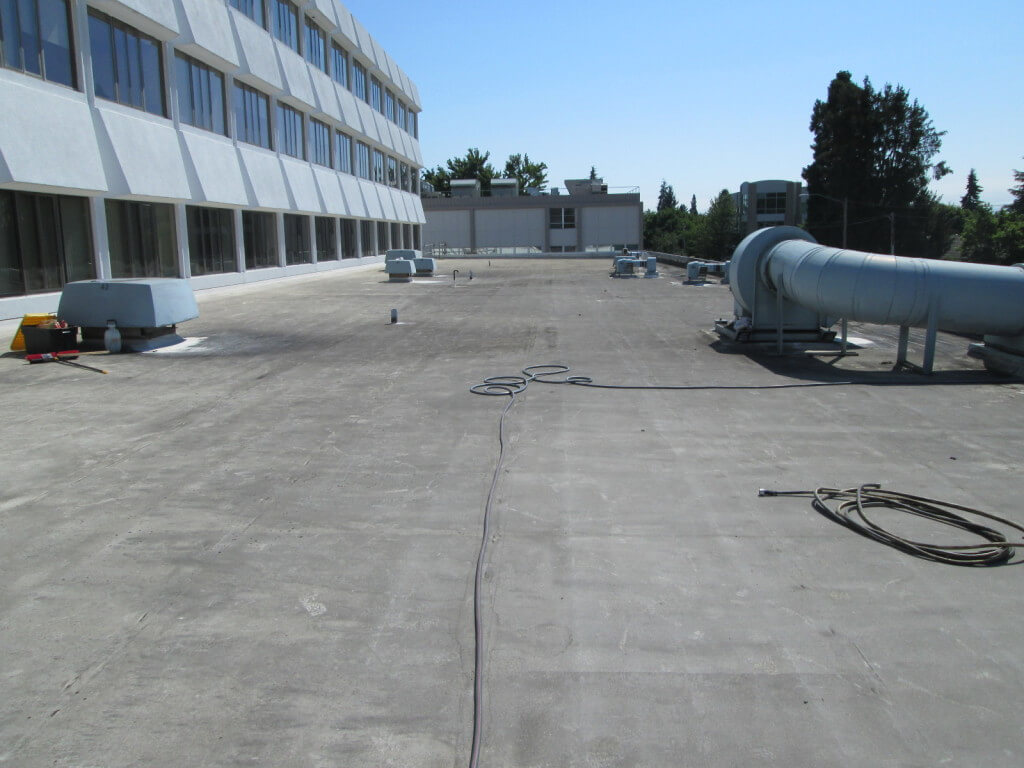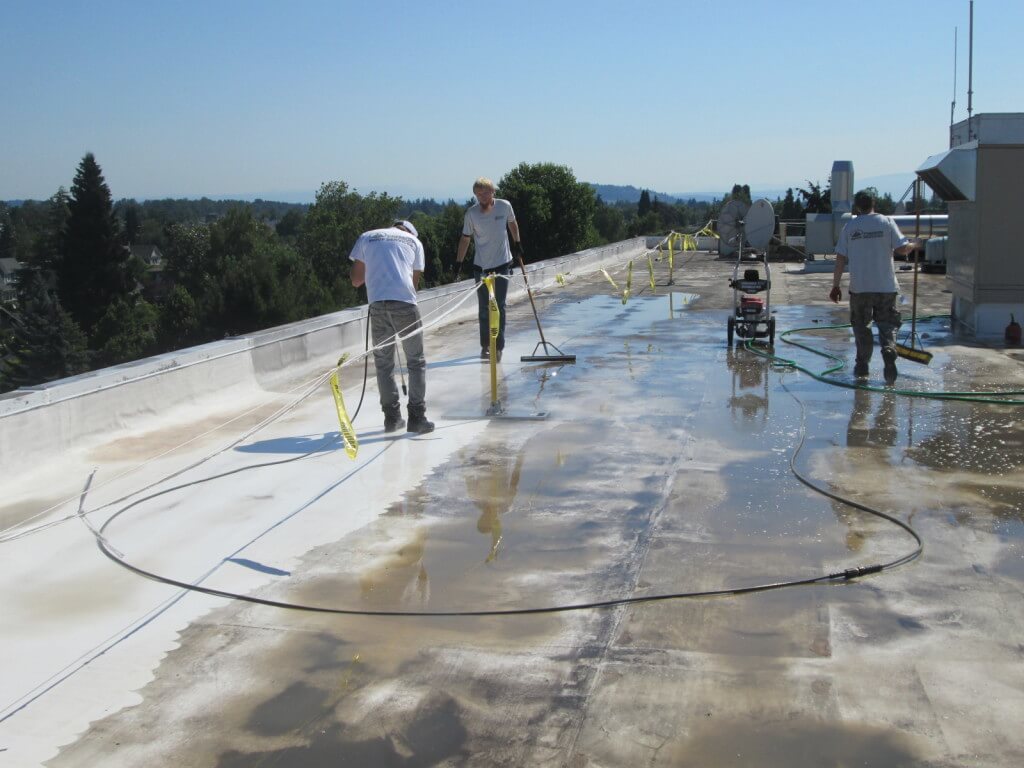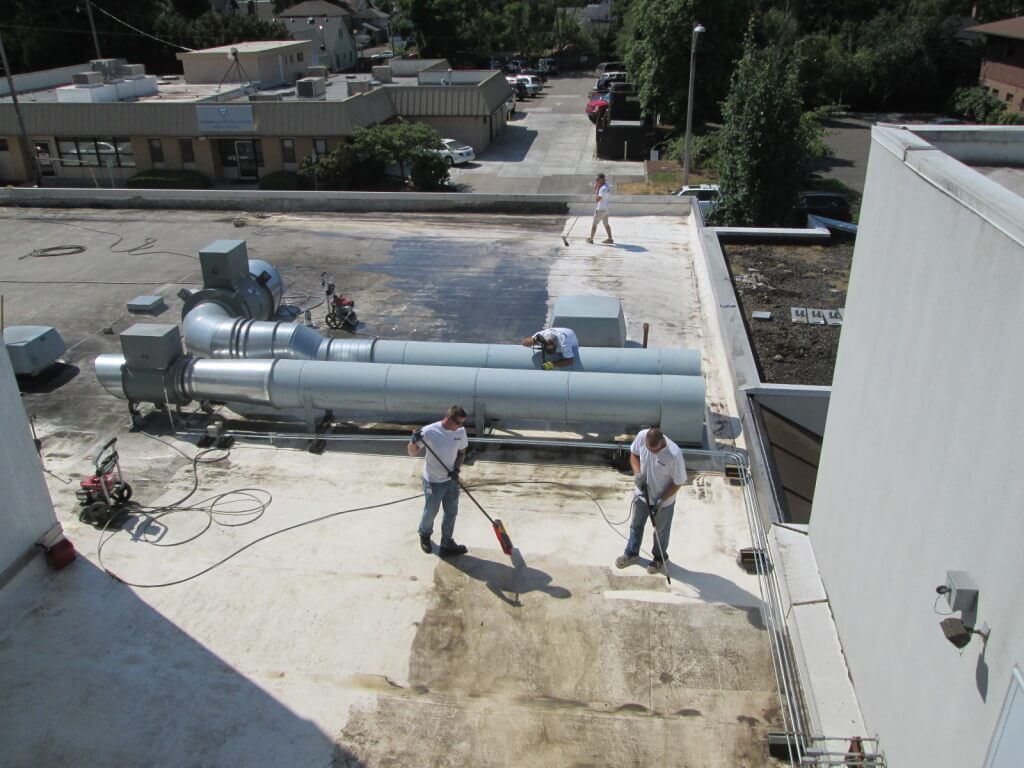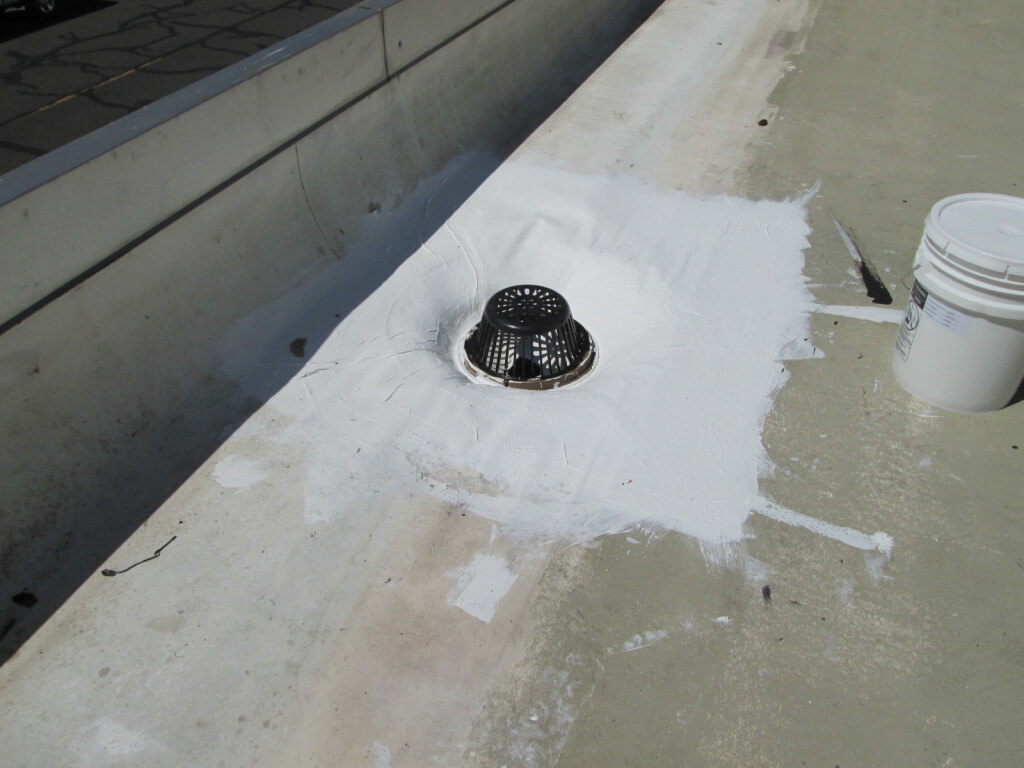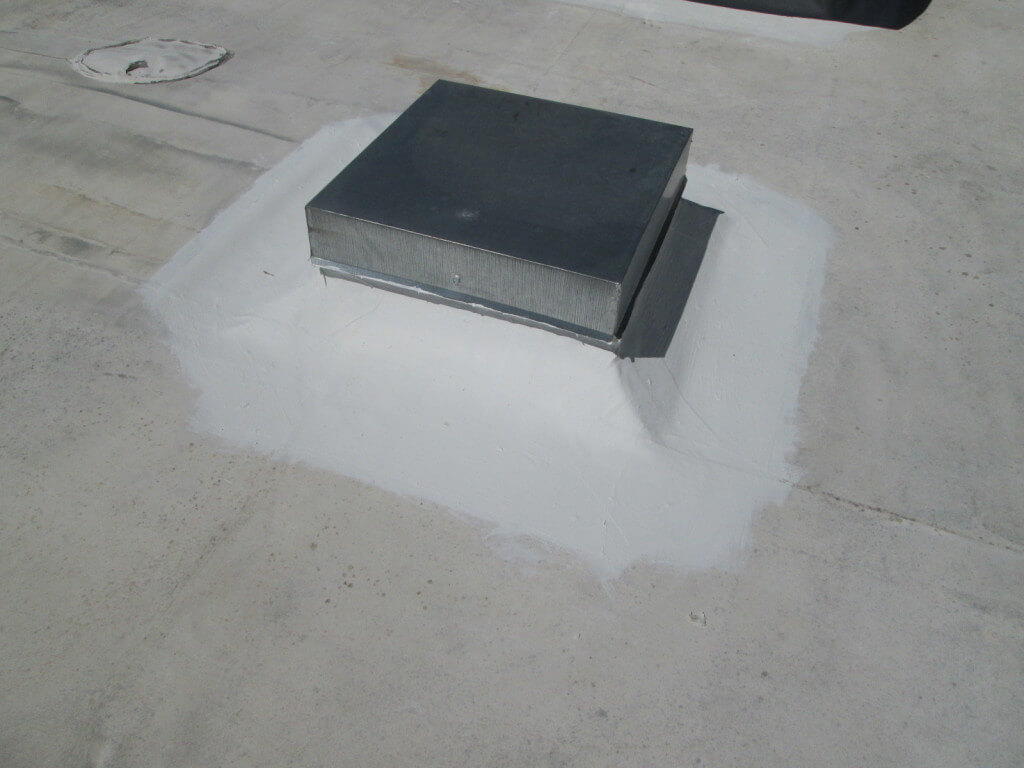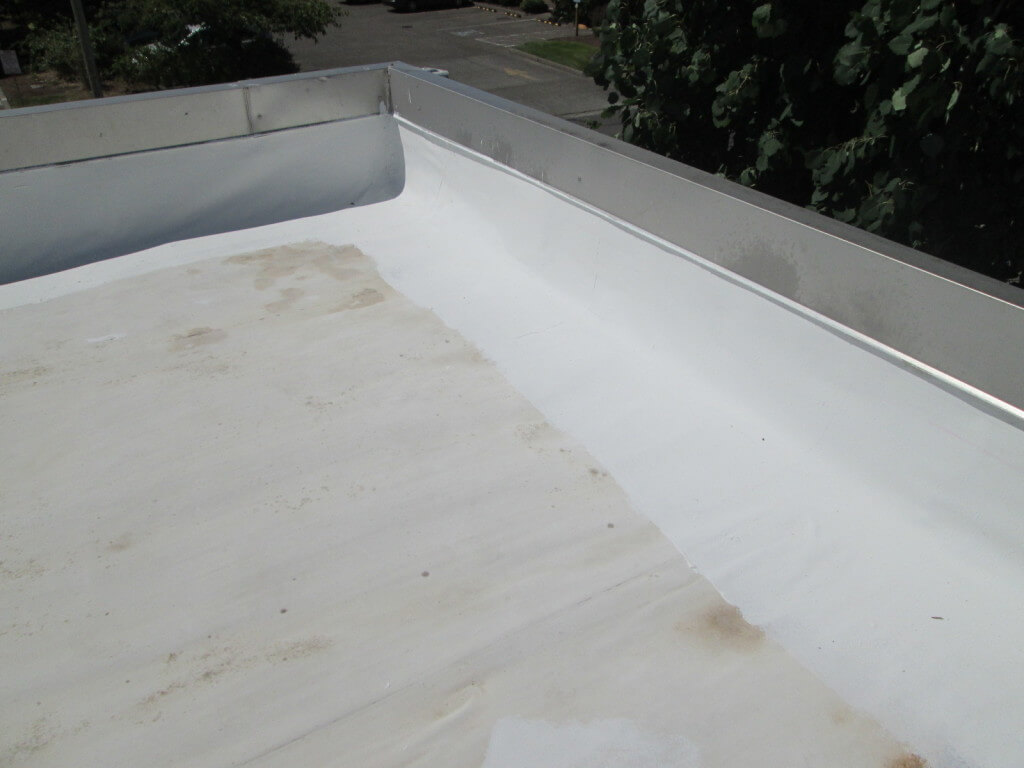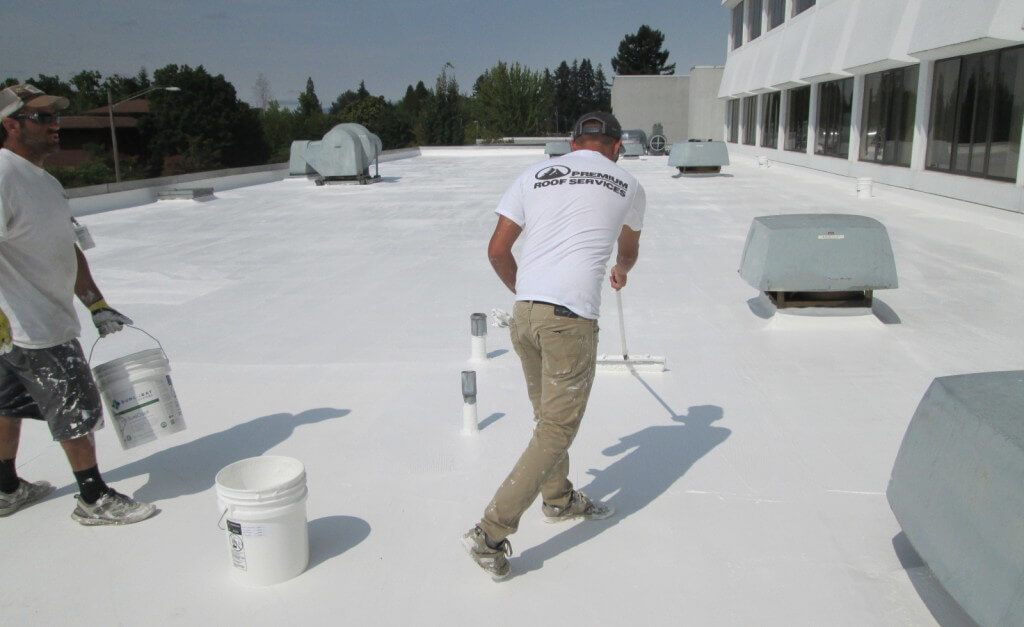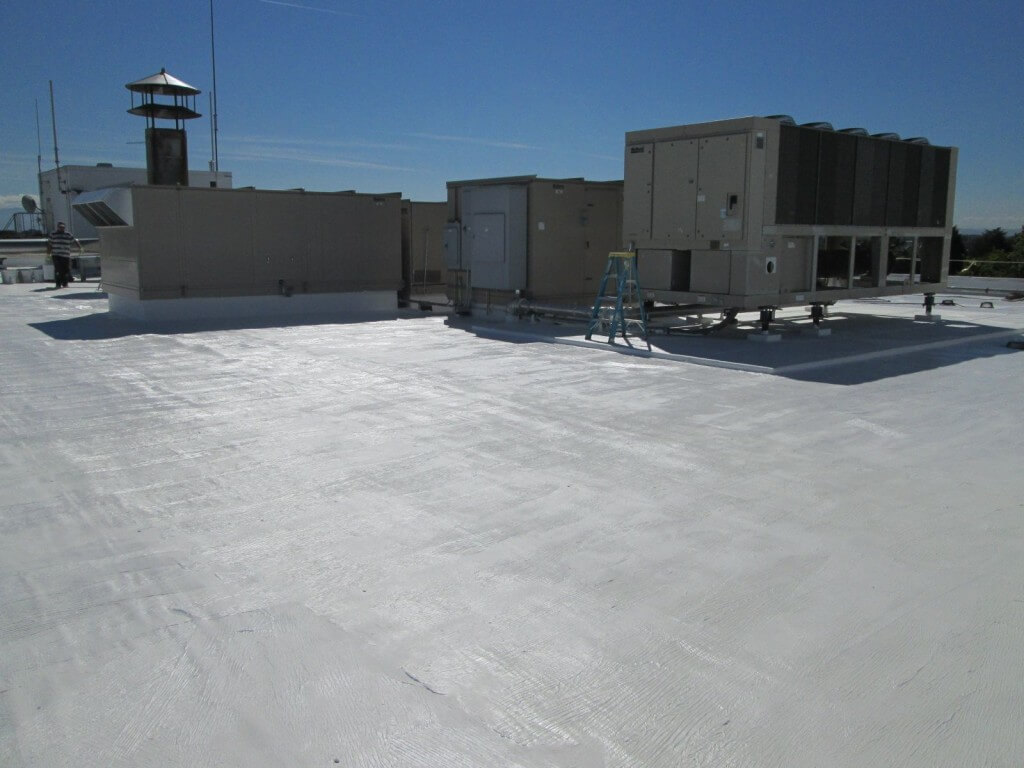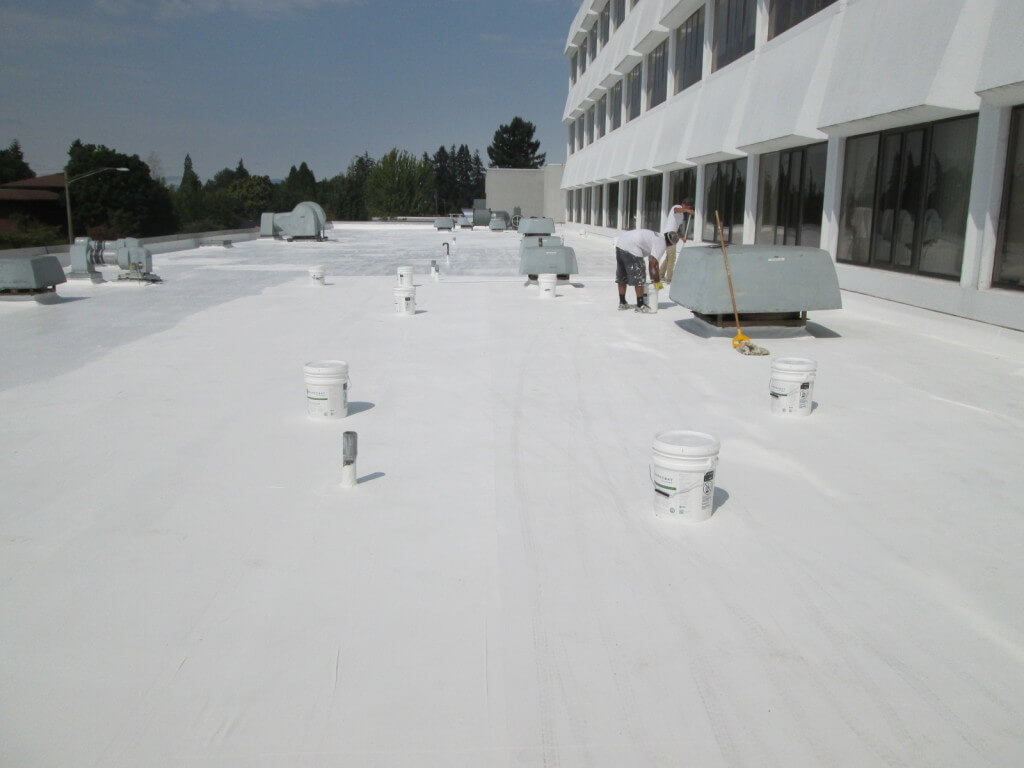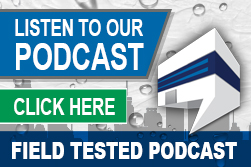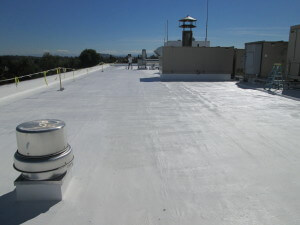PVC Roof Repairs and Roof Restorations
PVC (Polyvinyl Chloride) is a synthetic plastic polymer used in the manufacturing of several products including roof membranes. According to Wikipedia, PVC is the third most widely manufactured synthetic plastic. In the manufacturing of PVC roof membranes, plasticizers are added to the PVC to increase the flexibility of the plastic and increase elasticity. Plasticizers are additives meant to lower the cold-flex temperatures and increase the durability to PVC. Over time, these plasticizers evaporate or migrate out of the plastic. This process is accelerated when the PVC material is exposed to UV, heat and thermal cycles. As the plasticizers dry out of the PVC roof membrane, the roof loses its ability to move with the building and thermal cycling. The PVC roofing then becomes brittle, cracks and separates beginning at the seams and areas of heavy wear on the roof such as ponds, waterways and drains.
PVC roof membranes are single-ply roofing membranes that come in rolls and therefore have seams like rolled cap sheet. These roof membranes are generally anchored to the roof deck, creating holes in the roof deck where the single-ply material is bolted to the roof deck. As the roof thermal cycles, expands and contracts, the fasteners come loose. As the solar reflectance declines, up to 20% every three years, the PVC becomes brittle and loses the ability to move. Seam separation and stress or fracture cracks can appear. It is not surprising that one pond on an aged PVC roof can feed dozens of leaks that are extremely difficult to pinpoint.
PVC, like other single-ply materials, requires special flashings at the penetrations and around equipment curbs. Seams are either heat welded or “glued down”. Some PVC used in cold climates has been known to stress-shatter causing hundreds of little star-like fractures in each sheet, leaving even more opportunity for water intrusion. When PVC reaches the end of its life cycle, it has to be torn off and replaced like traditional roof materials. The old PVC ends up in landfills. PVC is made with 30% chlorine and is potentially hazardous to the environment and people. PVC can release dioxins. Dioxins are carcinogenic chemicals that can leach into the water tables. The SureCoat Roof System can be used over PVC roof membranes to extend their service life as well as encapsulate the existing roof and keep the roofing materials out of landfills.
PVC Roof Restoration - The SureCoat Roof System
There are very few products that will adhere to PVC well enough to achieve a positive adhesion test.
SureSkrub is the biodegradable cleaner, that when used properly, will remove the UV degraded glaze and dirt out of the existing PVC material to “etch” the surface so that the enhanced resins in the SureCoat Roof System material can bind with the PVC.
The SureCoat Roof System has stable energy-saving values. SureCoat have a thermal emittance of 93% even after 3 years with an overall Solar Reflective Index (SRI) of over 100; much higher than PVC after 3 years. This means that 93% of the heat that hits the roof surface is emitted back into the atmosphere, keeping the inside air temperatures much cooler and lowering the energy use by 20-30%. The SureCoat Roof System roof coatings have excellent bonding abilities and can transform a potentially hazardous PVC roof into a safe and sustainable cool roof. When installed by an Approved Contractor per recommendations, the SureCoat Roof System has a renewable manufacturer’s written warranty that includes coverage for ponding water over flat and low-sloped PVC roof membranes.
Call 877-823-7873 or click today to request pricing, specs, product data or for an Approved Contractor.

